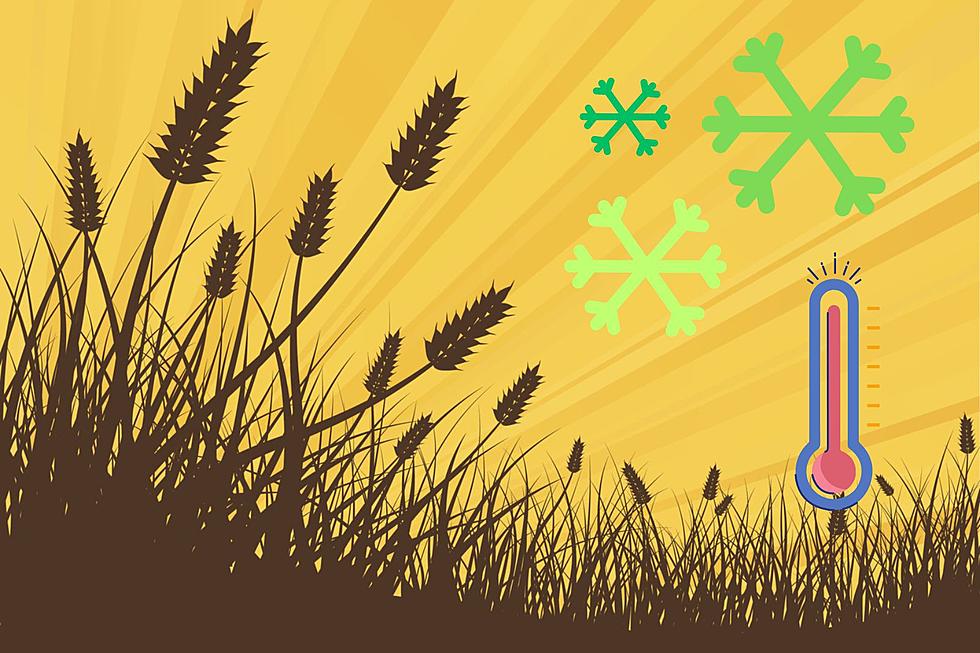
5 Scary Signs of Climate Change at the Jersey Shore
The views contained within do not necessarily reflect those of Townsquare Media and 94.3 The Point.
Well, today is Earth Day, and I would personally like to thank the Earth for putting up with me for 20 years. I think all of us can agree that we really take our planet for granted. From throwing a plastic bottle out of your car window to giant coal power plants spewing toxic gasses into the air - we treat our planet like a punching bag.
Now I'm not going to sit here and write about all of the negatives, we should be looking at the positives! We have made tremendous strides in recent years to combat climate change here in the United States and abroad, through The Paris Agreement signed by over 143 countries including both the United States and China.
Our work here in the United States is not over yet. We still have a long way to go before we can reverse some of the damage done by us in the past. Below I have highlighted some of the effects that climate change is having on our home, the Jersey Shore.
- Getty Images/iStockphoto
Getty Images/iStockphoto 1Temperatures
It's pretty scary how many people that will dismiss the changes of temperatures as a theory for climate change. Just because we have gotten warmer than normal days throughout the time you have been alive, doesn't mean that it's NOT a problem.
To properly put this into perspective, I will turn to this previous winter. Two days after Christmas, on December 27th it was 63 degrees. According to Accuweather, the average temperature was 43 degrees. That is a 20-degree difference. That trend continued not only throughout the month of December but throughout the winter as well. Yes, we still got snow, and very bitter temperatures this winter, HOWEVER, I encourage you to look at the line graph of the average temperatures in December, here.
- Getty Images
Getty Images 2Rising Sea Levels
Superstorm Sandy struck a nerve on the east coast, and more specifically right here in Ocean County, in Seaside Heights. It showed that the calm and peaceful waves could turn violent with the right weather patterns. The New York Times released an article shortly after Sandy that highlights what the Jersey Shore would loose in terms of land if countries throughout the world keep on our current course of polluting the Earth.
This map actually made me worry for future generations. According to this interactive map, in about 100 years, with our current course, sea levels would rise up to five feet. With this, the barrier islands would start to disappear, and Atlantic City and the Meadowlands would be flooded. By the year 2300, "Downtown Newark, downtown Jersey City, Atlantic City, most of the state's coastal towns and the Cape May peninsula are all gone."
- Christian Miller
Christian Miller 3Precipitation
Meteorologist Dan Zarrow does a pretty awesome job of keeping you up to date with the latest on storm systems that enter our area and dump massive amounts of rain (or snow). New Jersey has always been notoriously wet. So much, in fact, that with the onset of the Industrial Revolution the Jersey Shore has seen on average much more rain than before. A few years ago, in 2011, the record was broken for the most amount of precipitation in the history of the state (or when we started recording in the early 1800s).
So why is more rain and snow bad? Well for starters, the biggest reason, it can cause a massive amount of flooding along the coastline. Those living in Seaside Heights or Point Pleasent Beach would be able to tell you all about it. According to an article posted in 2011 to NJ.gov, some of the most major floods happened in 1999, 2004, 2005, 2006, 2007, 2010, and 2011. Now keep in mind, while this article was posted back in 2011, do you see a trend?
- 4
Salt Water Intrusion
The Environmental Protection Agency, more commonly known as the EPA, released a Climate Change outlook and noted that "Salt Water Intrusion" is a huge factor in Climate Change here at the Jersey Shore.
So what exactly is "Salt Water Intrusion"? The EPA says "As sea level rises, salt water can mix farther inland or upstream in bays, rivers, and wetlands. Because water on the surface is connected to ground water, salt water can also intrude into aquifers near the coast."
This could, in turn, lead to pure drinkable water in aquifers underground to become contaminated with salt water and render it undrinkable. While the outlook didn't mention that this process was already happening, it is possible, and when it does happen the results will be detrimental.
- Wavebreakmedia Ltd
Wavebreakmedia Ltd 5Human Health
So how exactly do Climate Change and your health go hand and hand? Well, believe it or not, it does, and when you hear some of the evidence provided, you'll probably be shocked.
For this section, I will be using Lymes Disease as my example. According to the EPA, "The ticks that transmit Lyme disease are active when temperatures are above 45°F, so warmer winters could lengthen the season during which ticks can become infected or people can be exposed to the ticks."
Noted above I mentioned temperature changes and focused on temperatures throughout the Garden State increasing, especially during this past winter. The Center for Disease Control showed that in 2014 and 2015 there were slight decreases in Lymes Disease cases, but this is probably due in part from advancements in repellants. With that being said, if temperatures were not increasing, we should be seeing a rapid decrease of cases in the thousands rather then the hundreds.
More From 94.3 The Point









